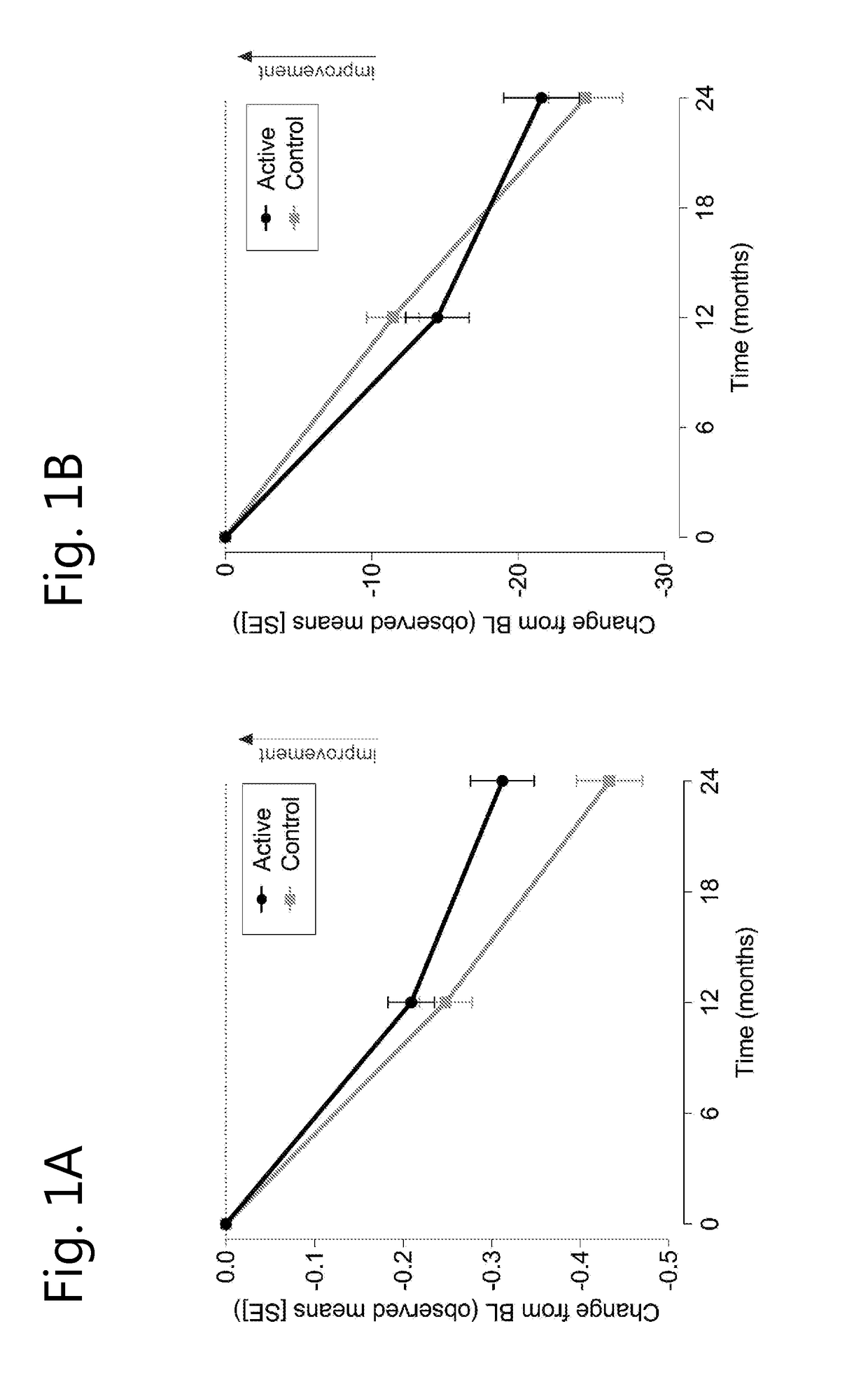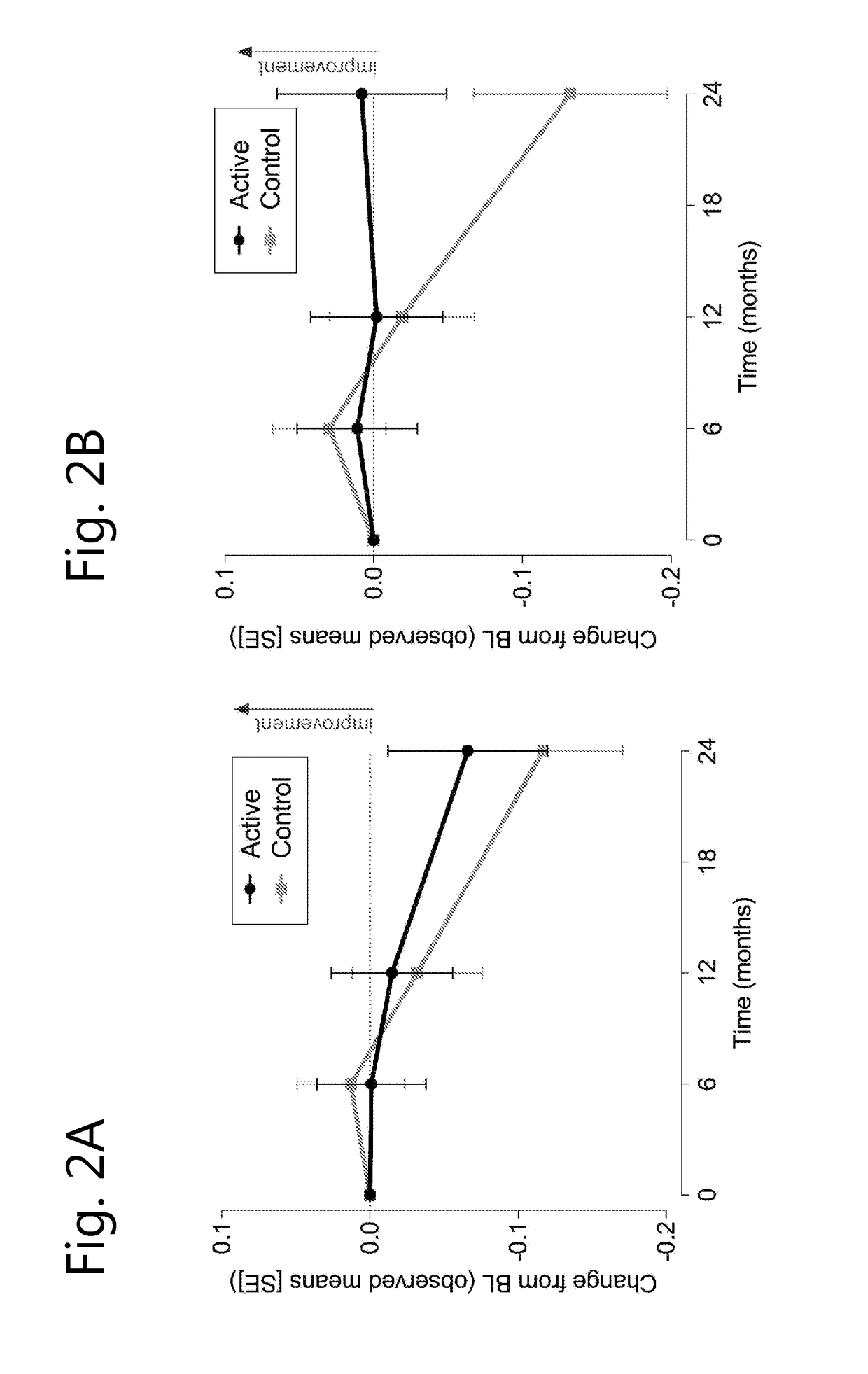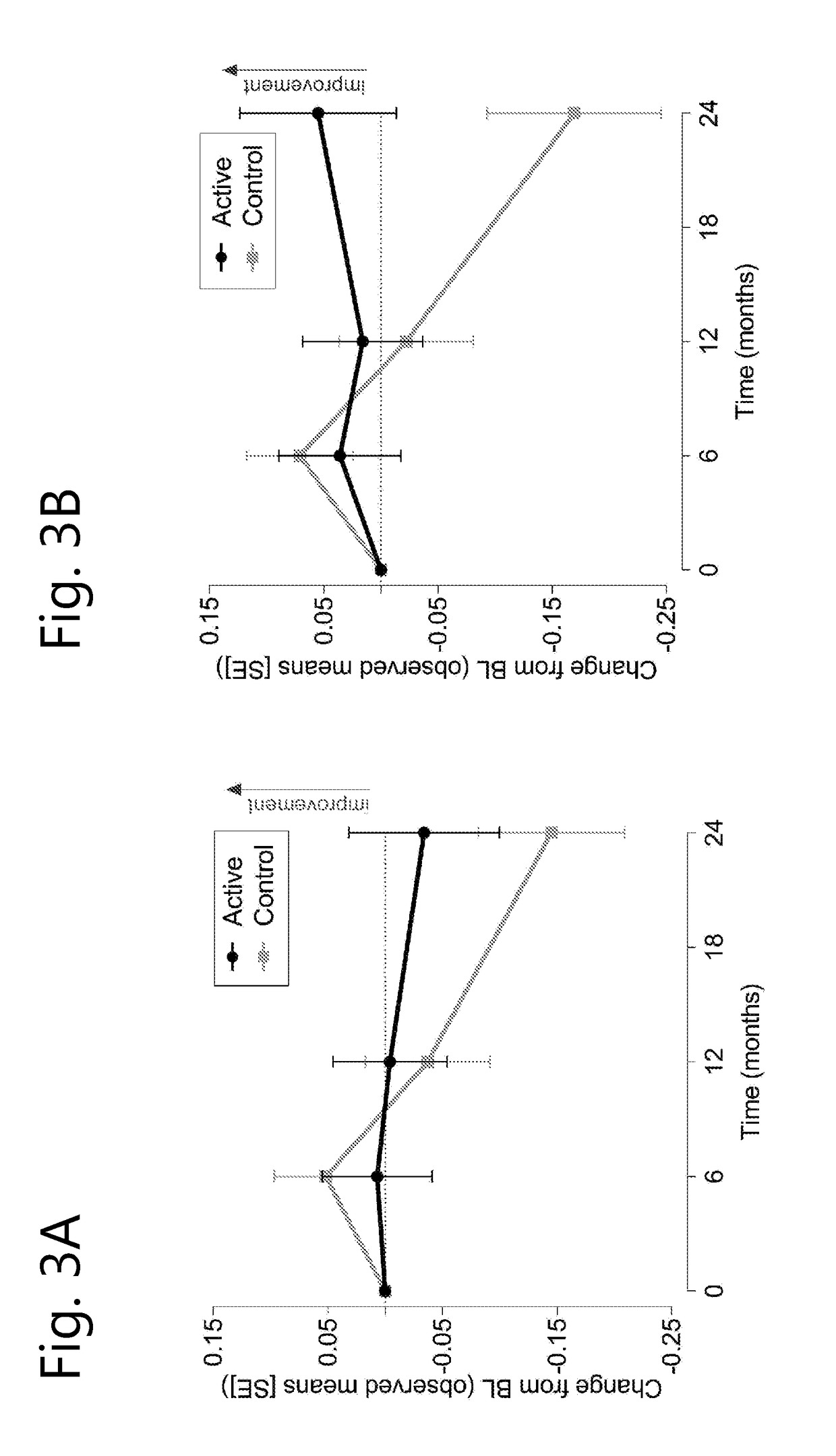Method for treating brain atrophy
a brain atrophy and treatment method technology, applied in the field of brain atrophy treatment methods, can solve the problems of reducing the functions that the brain controls, progressive brain atrophy provides a risk of neurodegenerative disease and cognitive and/or memory function impairment, and the lack of adequate studies of the risk factors for neurodegenerative diseases, so as to achieve the effect of reducing the progression of brain atrophy
- Summary
- Abstract
- Description
- Claims
- Application Information
AI Technical Summary
Benefits of technology
Problems solved by technology
Method used
Image
Examples
example 1
Clinical Trial
[0070]A randomised, controlled, double-blind, parallel-group, multi-country clinical study was undertaken wherein 311 prodromal subjects were either treated for 2 years with a composition according to the invention (active composition, per 125 ml: 300 mg EPA, 1200 mg DHA, 106 mg phospholipids, 400 mg choline, 625 mg UMP, 40 mg vitamin E, 80 mg vitamin C, 60 mcg selenium, 3 mcg vitamin B12, 1 mg vitamin B6, 400 mcg folic acid) or received an iso-caloric control.
[0071]Inclusion criteria for prodromal patients were defined as follows:[0072]1) suffering from episodic memory disorder, defined as −1 SD on 2 out of 8 tests (further explained below) of which at least memory test score is −1 SD.[0073]2) Evidence for underlying Alzheimer's disease pathology[0074]Medial temporal lobe atrophy >1 determined on MRI images[0075]Cerebral spinal fluid measurement of : β-amyloid ratio 60 or t-tau >350, or,[0076]An abnormal FDG-PET compatible with Alzheimer's disease type of changes.[007...
example 2
Effect of Exposure of Healthy Rats to the Composition of the Invention on Synapses
[0098]The additional value of vitamin C, vitamin E and selenium according to the invention was assessed in healthy rats supplemented with uridine (as uridine-5′-monophosphate) and fish oil (FO), containing DHA and EPA.
[0099]Rats were randomized to four treatment groups and fed 1 of the 4 intervention diets for 6 weeks (see Table 1). On completion of dietary treatment, rats were sacrificed, and brain samples were analyzed for levels of phospholipids, synaptic proteins, and 2 enzymes that are involved in the synthesis of phospholipids, i.e. choline-phosphate cytidylyltransferase (PCYT1A) and choline / ethanolamine phosphotransferase (CEPT1).
TABLE 1Diets comprising different amountsof the antioxidants, fish oil and UMP.Diet (grams / 100 gram diet)Diet 4Diet 1Diet 2Diet 3antioxidantantioxidantantioxidantantioxidant low &high &Nutrientlowhighfish oil + UMPFO + UMPVitamin C00.16000.160Vitamin E0.0003850.1600.000...
example 3
In Vitro Study of the Effect of a Composition According to the Invention on Neuron Outgrowth
[0102]PC12 pheochromocytoma cells were grown in DMEM (Gibco), supplemented with 10% fetal bovine serum (FBS), penicillin (100 units / ml), and streptomycin (100 μg / ml) (Gibco), under a humidified atmosphere with 95% air and 5% CO2 at 37° C. Cells were seeded in a 96 well plates at a density of 2000 cells / well, and after 24 hours supplemented with medium containing 20 ng / ml nerve growth factor (NGF). The cells were exposed to either a composition according to the invention or left unsupplemented (control). The composition the cells were supplemented with is indicated in table 3. Supplementation of cells was performed in triplicate. These conditions were compared to nonsupplemented cells. After supplementation for 2 days with these combinations, cells were stained using Calcein-AM stain (2ng / microliter) and the nuclei were counterstained using Hoechst stain (0.6 microgram / ml), in 100 μl culture m...
PUM
| Property | Measurement | Unit |
|---|---|---|
| Mass | aaaaa | aaaaa |
| Digital information | aaaaa | aaaaa |
| Mass | aaaaa | aaaaa |
Abstract
Description
Claims
Application Information
 Login to view more
Login to view more - R&D Engineer
- R&D Manager
- IP Professional
- Industry Leading Data Capabilities
- Powerful AI technology
- Patent DNA Extraction
Browse by: Latest US Patents, China's latest patents, Technical Efficacy Thesaurus, Application Domain, Technology Topic.
© 2024 PatSnap. All rights reserved.Legal|Privacy policy|Modern Slavery Act Transparency Statement|Sitemap



